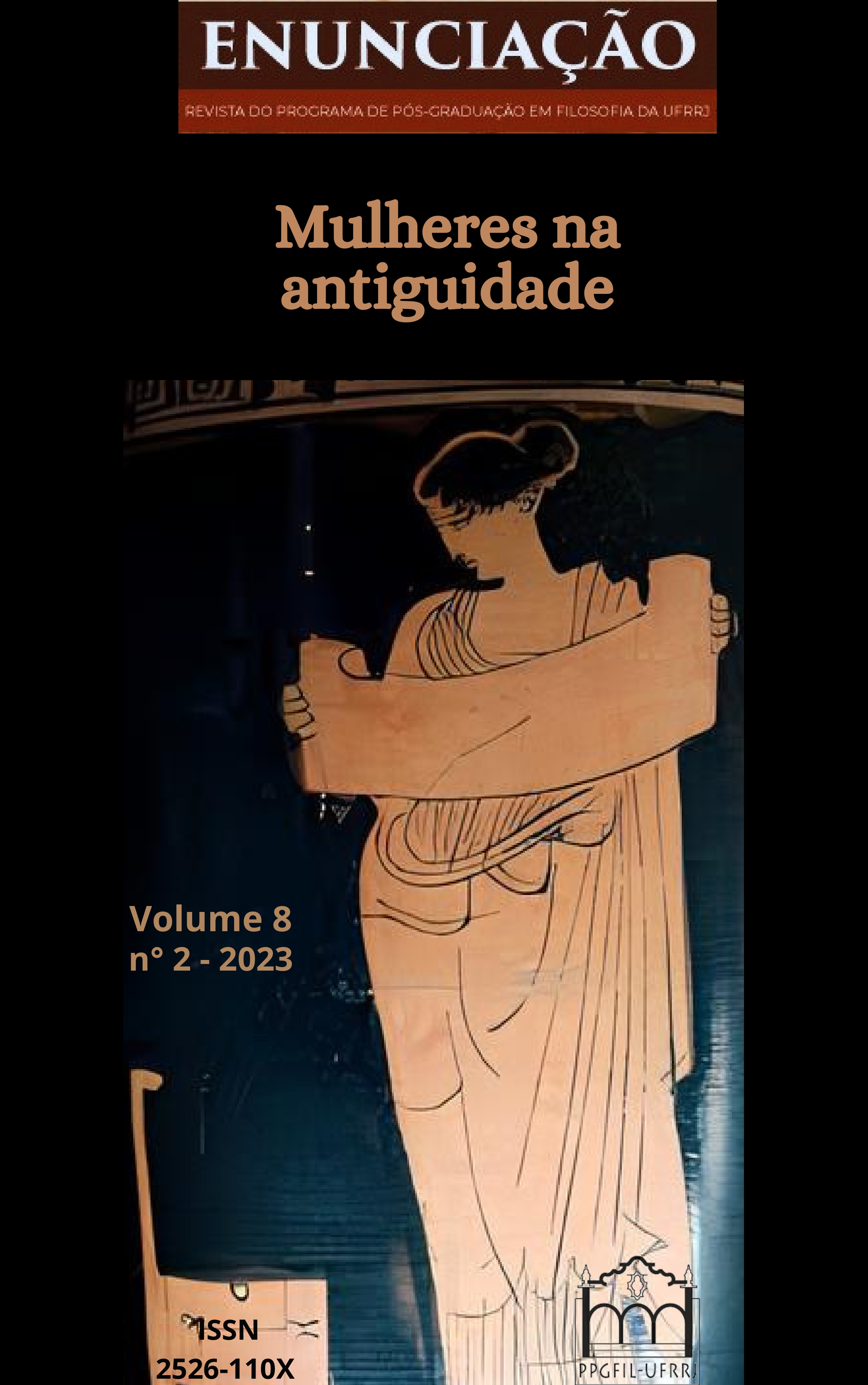Helena, Tétis e Cassandra em Alceu (Frs. 42, 283, 298 Voigt): (re)elaborações das figuras femininas míticas
DOI:
https://doi.org/10.61378/enun.v8i2.188Keywords:
Alcaeus; Greek melic; myth; Troy; femaleAbstract
The article is dedicated to three songs from Alcaeus’ melic poetry – Fragments 42, 283 and 298 Voigt – in which their mythical narratives bring us Helen, Thetis and Cassandra, all of them emerging within the framework of the Trojan cycle. It aims at analyzing how the poet (re)elaborates the representations of these characters in his songs in which myth functions as exemplum, in a way that is more or less clear for us.
References
BLONDELL, R. “Refractions of Homer’s Helen in archaic lyric”. AJPh 131, 2010, pp. 349-391.
BUDELMANN, F. (ed., introd., coment.). Greek lyric: a selection. Cambridge: University Press, 2018.
BURKERT, W. Religião grega na época clássica e arcaica. Trad. M. J. S. Loureiro. Lisboa: Fundação Calouste Gulbenkian, 1993.
CAPRIOLI, M. “On Alcaeus’ 42, Voigt”. CQ 62, 2012, pp. 22-38.
DAVIES, M. “Alcaeus, Thetis and Helen”. Hermes 114, 1986, pp. 257-262.
____. “The ‘Cologne Alcaeus’ and paradigmatic allusiveness”. ZPE 72, 1988, pp. 39-42.
DEGANI, E.; BURZACCHINI, G. (coment.). Lirici greci. Bologna: Patròn Editora, 2005.
FOWLER, R. L. “Reconstructing the ‘Cologne Alcaeus’”. ZPE 33, 1979, pp. 17-28.
GANTZ, T. Early Greek myth. Baltimore: The Johns Hopkins University Press, 1996. 2 vols.
GRAVER, M. “Dog-Helen and Homeric insult”.ClAnt 14, 1995, pp. 41-61.
HERINGTON, J. Poetry into drama. Early tragedy and the Greek poetic tradition. Berkeley: University of California Press, 1985.
HUTCHINSON, G. O. (coment.). Greek lyric poetry. Oxford: University Press, 2003.
KIP, A. M. van E. T. “Alcaeus: ‘Aias and Kassandra’”. In: BREMER, J. M. et alii. Some recently found Greek poems. Leiden: Brill, 1987, pp. 95-127.
LLOYD-JONES, H. “The Cologne fragment of Alcaeus”.GRBS 8, 1969, pp. 125-139.
MALTA, A. “Metapoesia e a Helena de Homero”. Nuntius Antiquus 12, 2016, pp. 13-25.
MAZZOLDI, S. “Cassandra, Aiace e lo ξόανον di Atena”. QUCC 55, 1997, pp. 7-21.
____. Cassandra, la vergine e l’indovina. Identità di un personaggio da Omero all’Ellenismo. Pisa: Istituti Editoriali e Poligrafici internazionali, 2001.
PAGE, D. L. Sappho and Alcaeus: an introduction to the study of ancient Lesbian poetry.Oxford: Clarendon, 2001. [1a ed.: 1955].
PAOLI, B. de. “Cassandra em três tempos: bela, adivinha, trágica”. Rónai 7, 2019, pp. 4-17.
PAPADIMITROPOULOS, L. “Alcaeus fr. 42: human perception and divine workings”. MH 73, 2016, pp. 11-17.
RAGUSA, G. Lira, mito e erotismo: Afrodite na poesia mélica grega arcaica. Campinas: Editora da Unicamp, 2010. (Apoio: Fapesp).
____. (org., trad.). Lira grega: antologia de poesia arcaica. São Paulo: Hedra, 2013.[2ª ed. rev.: prelo 2024]
SLATKIN, L. “Homer’s Odyssey”. In: FOLEY, J. M. (ed.). A companion to ancient epic. Oxford: Blackwell, 2005, pp. 315-329.
VOIGT, E.-M. (ed.). Sappho et Alcaeus. Amsterdam: Athenaeum, Polak & Van Gennep, 1971.
WEST, M. L. (ed. e trad.). Greek epic fragments, from the seventh to the fifth centuries BC. Cambridge: Harvard University Press, 2003.
Downloads
Published
Issue
Section
License
I declare that the article or reviews or translation is original.
By publishing in this journal, I agree that:
a) my copyright will be maintained, granting the magazine the right of first publication.
b) I can assume additional contracts separately, for non-exclusive distribution of the version of the work published in this magazine (e.g., publishing as a book chapter), with acknowledgment of authorship and initial publication in this magazine.
c) articles can be printed as long as the source of the journal is informed and the author (s) are duly credited.

